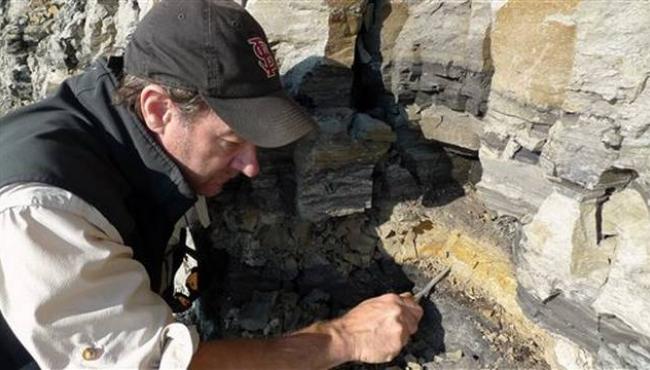-
Tips for becoming a good boxer - November 6, 2020
-
7 expert tips for making your hens night a memorable one - November 6, 2020
-
5 reasons to host your Christmas party on a cruise boat - November 6, 2020
-
What to do when you’re charged with a crime - November 6, 2020
-
Should you get one or multiple dogs? Here’s all you need to know - November 3, 2020
-
A Guide: How to Build Your Very Own Magic Mirror - February 14, 2019
-
Our Top Inspirational Baseball Stars - November 24, 2018
-
Five Tech Tools That Will Help You Turn Your Blog into a Business - November 24, 2018
-
How to Indulge on Vacation without Expanding Your Waist - November 9, 2018
-
5 Strategies for Businesses to Appeal to Today’s Increasingly Mobile-Crazed Customers - November 9, 2018
A duck-billed vege eater – new species of dinosaur discovered in Alaska
It’s the fourth distinct species to be named from Alaska’s North Slope, the area from the north side of the Brooks Range to the Arctic Ocean.
Advertisement
More than six thousand bones of the specific species have been collected from a site near the Colville River.
“Alaska is basically the last frontier”, said Erikson. Dubbed Ugrunaaluk Kuukpikensis, the dinosaur was so far north that it would have lived in darkness for months at a time, and may even have lived in snowy zones. Earlier today we discussed how Florida State University professor Greg Erickson and his team went about classifying a new type of dinosaur in this region. His research suggests that the area was around 40 degrees Fahrenheit on average, and he compares the climate to that of British Columbia.
Mark Norell, curator of palaeontology at the American Museum of Natural History in New York, said it was plausible the animals lived in the high Arctic year-round, just like musk oxen and caribou do now. “It wasn’t a warm winter, but it was much warmer than it is today”, he said.
A sample of frozen bone researchers excavated from the Liscomb Bed in the Prince Creek Formation in northern Alaska. BELOW: Liscomb Bone Bed, wide view.
The paleontologists believe a herd of juvenile Ugrunaaluk kuukpikensis was killed suddenly to create this deposit of remains.
They initially were thought to be Edmontosaurus, a hadrosaur well-known in Canada and the USA , including Montana and South Dakota.
The AP reports the species’ bones had been confused with the bones of the Edmontosaurus for about 25 years until a formal study finally revealed the differences in the skull and mouth.
The name, which means ancient grazer, was a collaborative effort between scientists and Inupiaq speakers.
The fossils of this newly-discovered hadrosaur species offer the clearest picture to date of dinosaurs living on the North Slope of Alaska. The location was even further north when Ugrunaaluk herds grazed there, Druckenmiller said.
University of Alaska Fairbanks graduate student Hirotsugu Mori over five years completed his doctoral work on the species. The findings were published Tuesday in “Acta Palaeontologica Polonica”, an worldwide paleontology quarterly journal. Florida State University researcher Gregory Erickson, who specializes in using bone and tooth histology to interpret the paleobiology of dinosaurs, also was part of the study.
This hadrosaur species lived in a polar forest with lower temperatures and months of darkness and snow and is one of three documented dinosaurs discovered in the region. We don’t know a ton about how dinosaur metabolisms worked (in fact, debate over whether they were warm- or cold-blooded still rages), but most people think of them as fairly tropical creatures, like modern lizards.
Advertisement
“The discovery of Ugrunaaluk kuukpikensis further clarifies the faunal composition of the Prince Creek Formation and contributes to a growing body of evidence that the paleo-Arctic hosted a distinct and endemic polar, early Maastrichtian dinosaurian fauna”, the scientists said.





























